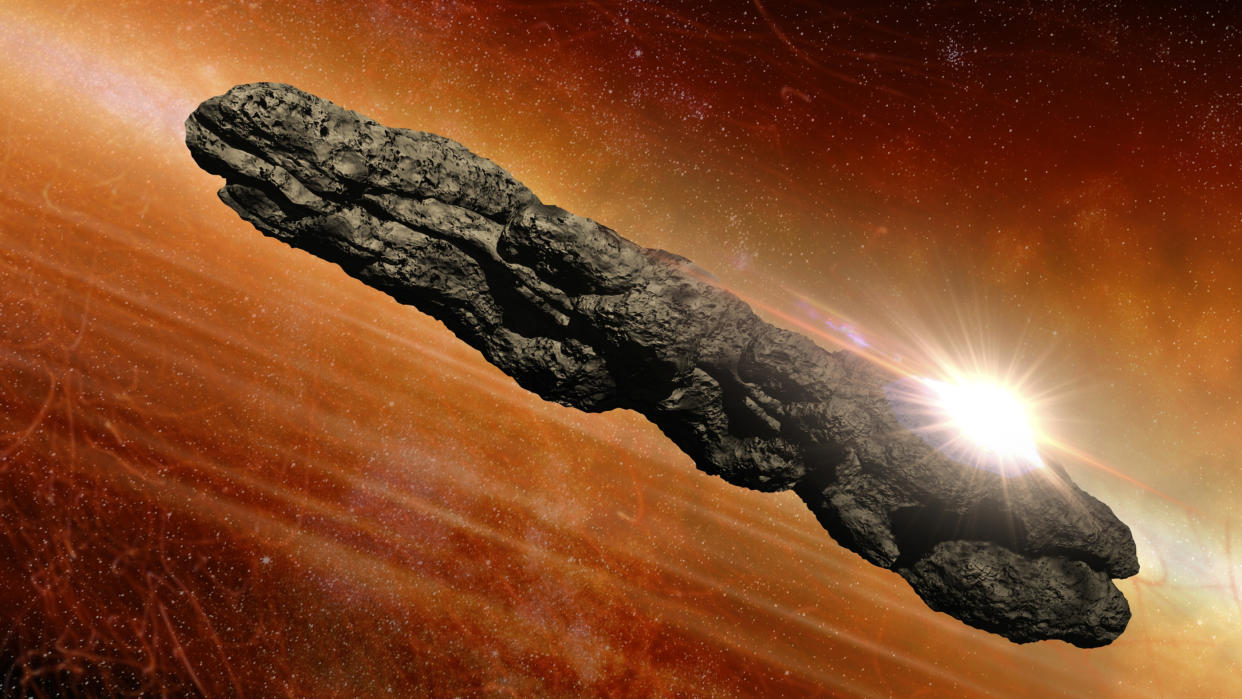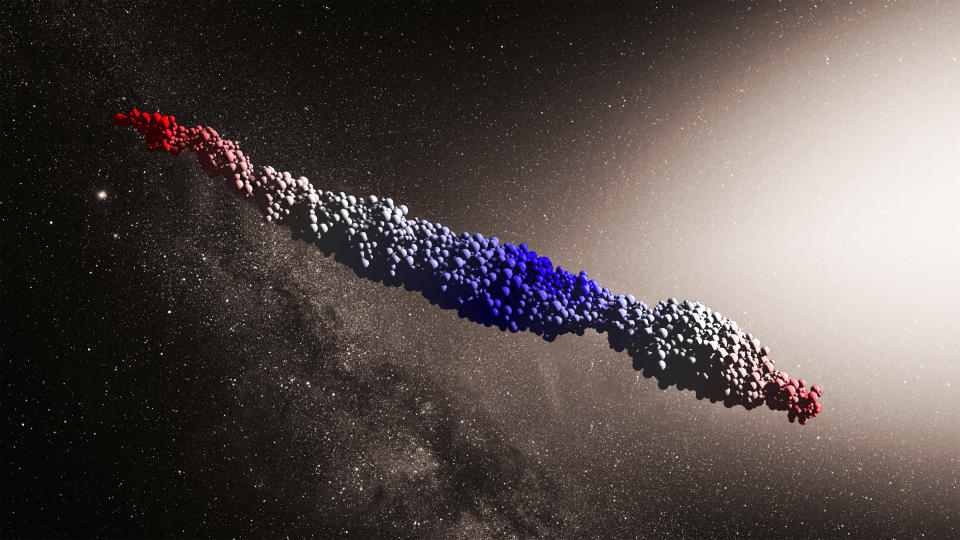'Oumuamua isn't an alien spaceship — it's a rock that's farting hydrogen, new study suggests

The bizarre movements of the interstellar object 'Oumuamua may have a reasonable explanation that has nothing to do with intelligent aliens, new research finds.
The strange interstellar visitor — the first object ever detected in our solar system that originated outside it — triggered a scientific mystery when researchers saw it accelerating away from the pull of the sun's gravity. Comets show this kind of odd acceleration when ice within them starts to be heated by the sun, but 'Oumuamua was no comet. The mystery even had some commenters speculating that 'Oumuamua might be an alien spacecraft.
But a new study published Wednesday (March 22) in the journal Nature reveals a more mundane explanation: Hydrogen molecules trapped within ice below 'Oumuamua's surface may have been released from the object as the sun warmed it, slightly slowing 'Oumuamua's flight past the sun. These hydrogen molecules would not have been detectable in scientists' observations of 'Oumuamua, lead study author Jennifer Bergner, a chemist at the University of California, Berkeley, told Live Science.

'Oumuamua was first observed in October 2017 and remained within telescope sight for about four months before zipping out of view. In that short period, it caused quite a kerfuffle, thanks to its bizarre properties. The cigar-shaped object was around 1,300 feet (400 meters) long and perhaps 10 times skinnier than that, according to NASA. At first, researchers thought it might be a comet, but it did not form a tail or give off a cloud of dust and gas as it approached the sun.
It might have passed as an asteroid — these space rocks move under the influence of gravity alone — if it weren't for the unexplained changes in speed that researchers observed when it was nearby.
"There were a number of studies that tried to explain both of these observations, but none could really do so without requiring very specific and improbable formation scenarios," Bergner said.
However, there were some hints that a light molecule, like hydrogen, might be able to drive the trajectory of an object like 'Oumuamua. Bergner and her co-author Darryl Seligman, a postdoctoral researcher at Cornell University, modeled the possibility that hydrogen trapped within 'Oumuamua could explain its acceleration.
They found that the object was capable of containing enough hydrogen to do just that. In this scenario, 'Oumuamua was born in some far-off planetary system as an ordinary, comet-like object. At some point hundreds of millions of years ago, it got free from its home system and began a long journey through interstellar space, where cosmic rays hit water trapped in its body and released hydrogen atoms, which recombined as hydrogen molecules.
These hydrogen molecules remained trapped within pockets in the ice present in 'Oumuamua, which, at the very cold temperatures of interstellar space, has a disorganized, glass-like structure. As 'Oumuamua traveled through the relative warmth of our solar system, this ice began to develop a slightly more organized structure, as if preparing to become the crystalline ice familiar on Earth. As it did, hydrogen escaped in large enough quantities to propel the object slightly against the sun's gravity.
Related stories
—A spacecraft could visit weird interloper 'Oumuamua. Here's how.
—7 things most often mistaken for UFOs
—Scientists want to build an 'interstellar interceptor' to play hide-and-seek with the next 'Oumuamua
"I think this explanation makes a lot of sense," said Marco Micheli, an astronomer at the European Space Agency's Near-Earth Object Coordination Centre in Italy. "It's probably the most consistent model so far that fully explains what we observed on 'Oumuamua without the need for any exotic explanation," said Micheli, who was not involved in the new study but authored an editorial about the work for Nature.
The hydrogen effect probably happens on normal comets that originate in the solar system, Bergner said, but it likely doesn't affect the speed or trajectory of objects unless they, like 'Oumuamua, are very small.
"If we can find smaller comets from the Oort cloud [at the edge of the solar system] as they're coming in," she said, "we can potentially test whether we see outgassing of hydrogen."
